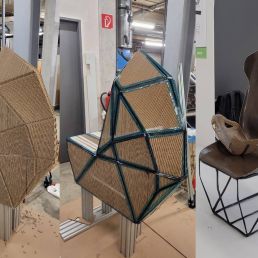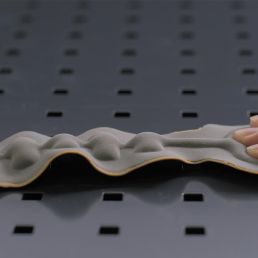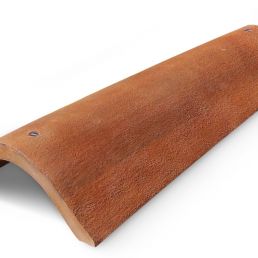As pliable as Granite
New Application for Stone and Concrete Materials
form 220
May/June 2008
publisher
Birkhäuser (Basel)

Stone materials and concrete are among the oldest materials in the world when it comes to producing objects and buildings. It is all the more astonishing that so many new developments and applications for designers are coming onto the market right now.
Anyone wanting to instill a kitchen or bathroom with an especially superior feel today will rely on concrete and stone materials. From them, designers mold large monolithic worktops and wash basins into the surface of which the water course becomes inscribed. Yet stone materials are also becoming ever more popular in different fields as more precise production methods and material innovations provide new opportunities. One needs to think only of moldable Corian, Litracon light-permeable concrete or stone veneers for furniture and facades, such as are offered by Richter Furniertechnik.
It seems that the potential of these materials is by no means exhausted. For example, Hamburg-based designer Alexa Lixfeld uses concrete as a material for product design in a quite different way than ever before. What once led to massive objects with a shape strongly constrained by the minimum wall thickness required, can now engender quite different results: Lixfeld combines the concrete with a special coating to create refined components and smooth gleaming tableware with a water-repellent surface and an extraordinary appearance.
Until recently, the properties which Munich-based company Technocarbon gives granite were quite inconceivable: It can be bent. Carbon fiber stone (CFS) is the name of a composite material made of natural stone covered by a carbon fiber laminate. This protects it against extreme strain and ensures that the stone itself does not break when subjected to shocks. The material can be bent without damage and afterwards returns to its original shape. Since CFS possesses oscillation-absorbing properties it could be used for a whole range of dynamic applications, such as wind power plants, car chassis and sports devices; to date, it has already been used to make skis.
The new developments in the field of stone materials include nanotechnology. Milan Municipal Council has already announced that it intends to blend photocatalytic nano-titanium dioxide into the road asphalt used in the smog-bedeviled city, as the particles would help clean the air. In this way, exhaust fume levels are expected to be halved. An effect that has already been successfully tested for glass facades and wall paints. The environment says thank you!
www.alexalixfeld.com
www.technocarbon.de
www.richter-veneertech.com
www.paxmann.de
www.corian.de
image source: Alexa Lixfeld
Ecoblaq molecular wood colours
23 March 2024
Ecoblaq is a molecule manipulation method, a natural chemical reaction, making…
Natural fiber reinforced car seat
22 October 2023
The focus of the project "Design for Recycling" is a seat shell that is made…
MotorSkins morphing textiles
19 April 2022
Berlin based start-up MotorSkins designs and produces textiles with embedded…
3D Pioneers Challenge 2022
15 December 2021
The 3D Pioneers Challenge 2022 adresses tech pioneers who pave the way for…
IGNIS – Light from waste heat energy
12 August 2020
The availability of affordable, independent and, above all, clean electrical…
Brake disc with reduced fine dust
21 April 2021
Fine dust endangers our health. One of the main sources is traffic, especially…
Texoversum
15 July 2023
With the "Texoversum", Reutlingen University has put into operation a training…
Invisible Terracotta Solar Rooftile
10 May 2023
The family-run business Dyaqua has developed a technology to integrate a…
Xarvio – Digital Farming
8 January 2021
BASF Digital Farming GmbH has received the renowned Crop Science Award for the…








